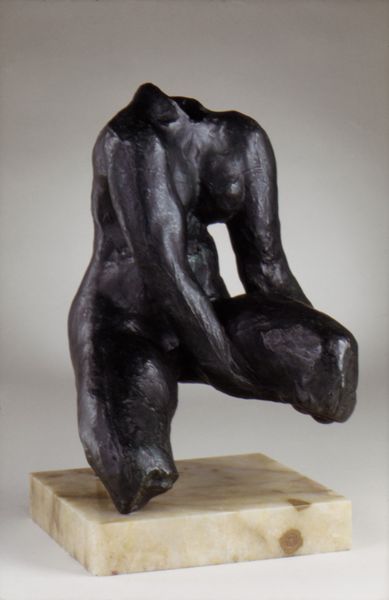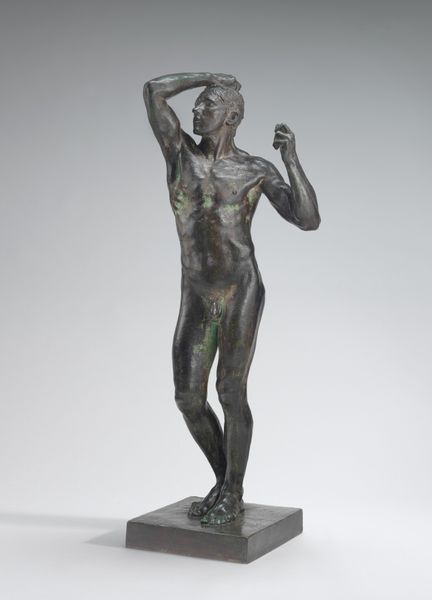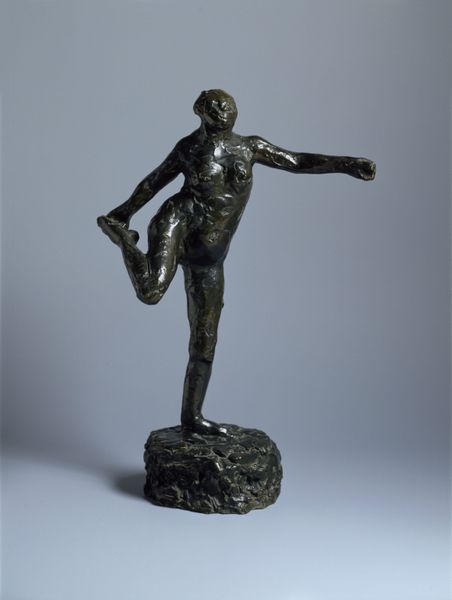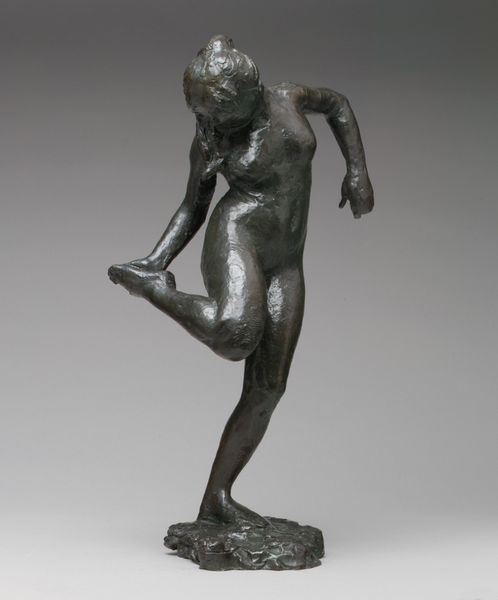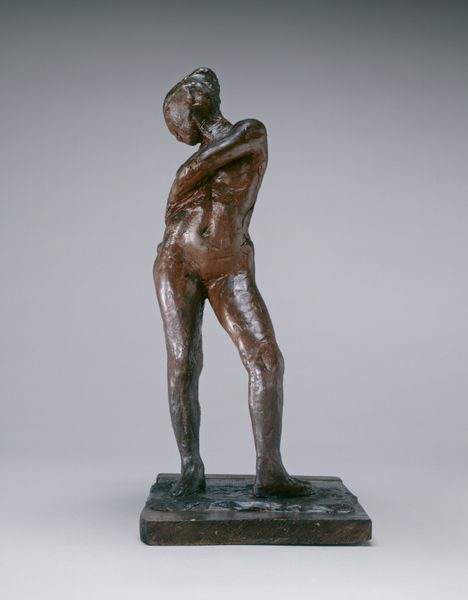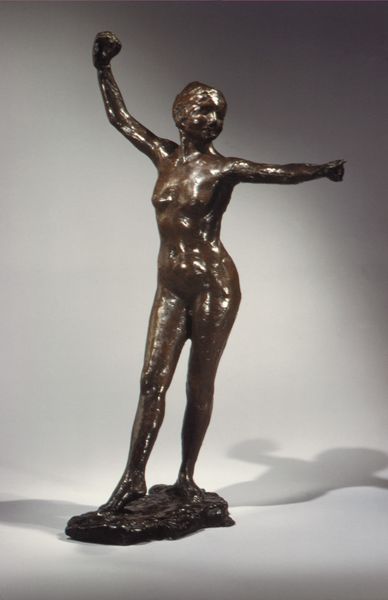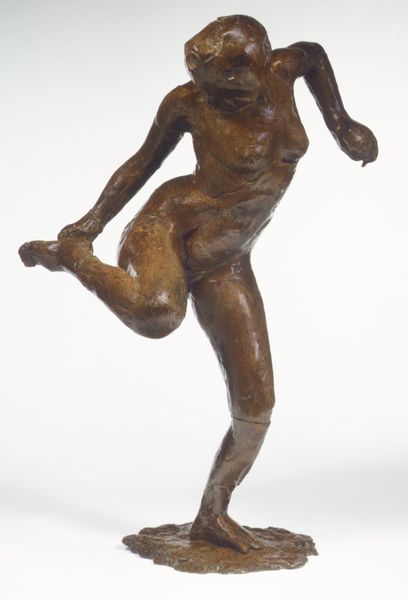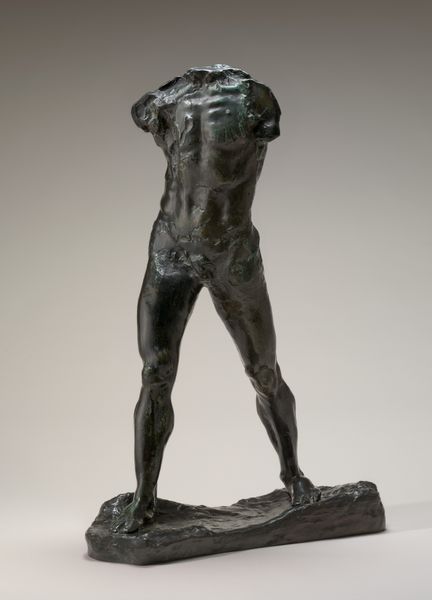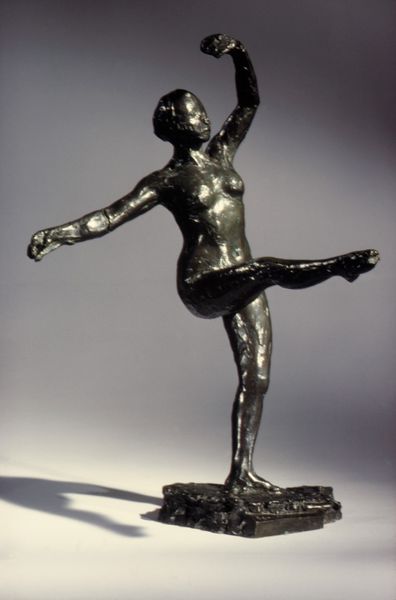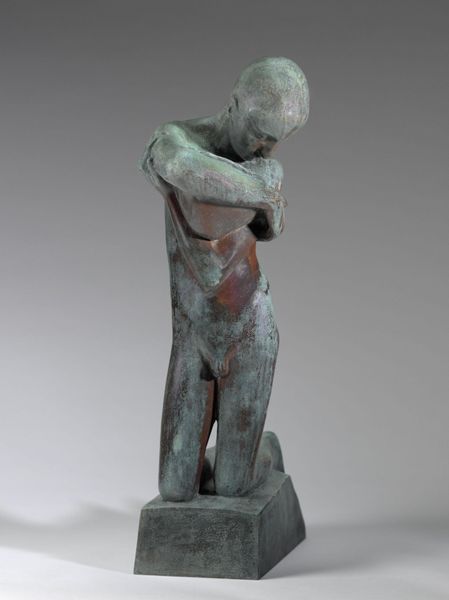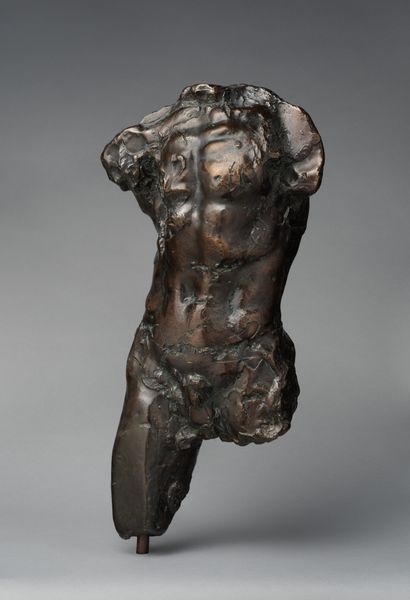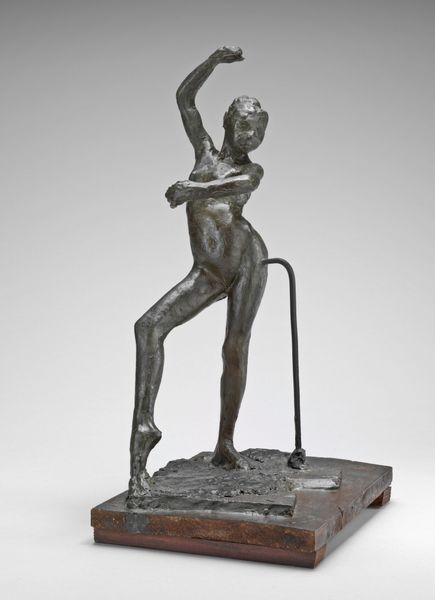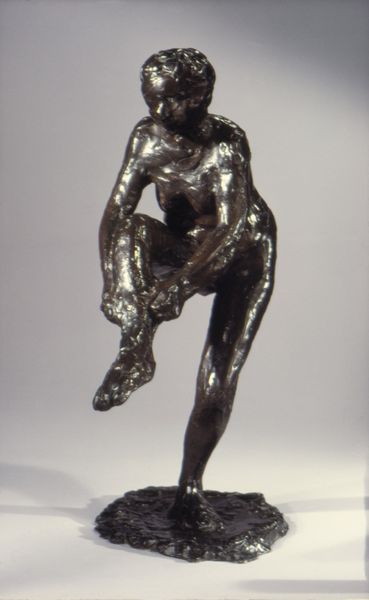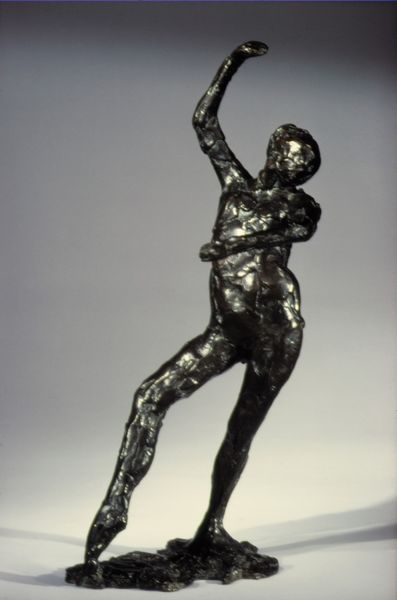
bronze, sculpture
#
portrait
#
cubism
#
statue
#
sculpture
#
bronze
#
figuration
#
sculpture
#
statue
Dimensions: overall: 55.2 x 33.9 x 40.2 cm (21 3/4 x 13 3/8 x 15 13/16 in.)
Copyright: National Gallery of Art: CC0 1.0
Editor: This is Raymond Duchamp-Villon's bronze sculpture, "Torso of a Young Man," from 1910. It’s striking how the figure is simultaneously classical and fragmented. What do you see in this piece through the lens of its form? Curator: The bronze surface presents an immediate and captivating study in light and shadow. Notice how the artist uses a nuanced application of patination to accentuate the play of these elements across the planes. Duchamp-Villon here employs the Cubist technique of fracturing form but contains it within a recognizably human, athletic physique. Editor: So, it’s like he’s taking a classical subject and pulling it apart using Cubist language? Curator: Precisely. The emphasis shifts from faithful representation to an exploration of spatial relationships and how they articulate mass. Consider the abrupt truncation of the limbs. The absence prompts reflection on how the incomplete can be just as potent as the complete. The eye is forced to reconcile this with its inherent understanding of the human figure. Do you see how the artist plays with notions of negative space, particularly in the area where the arms would normally be? Editor: Yes, the cylindrical stumps almost become design elements in themselves, further emphasizing the abstraction. It seems like the artist wants us to focus on the simplified forms rather than realistic details. Curator: Exactly. The artwork offers a space for viewers to engage with its semiotic construction and question their expectations regarding representational sculpture. Editor: It’s interesting how analyzing the form in this way can lead to understanding its conceptual underpinnings. Thanks! Curator: My pleasure. Examining the internal logic of the sculpture gives it power.
Comments
No comments
Be the first to comment and join the conversation on the ultimate creative platform.
